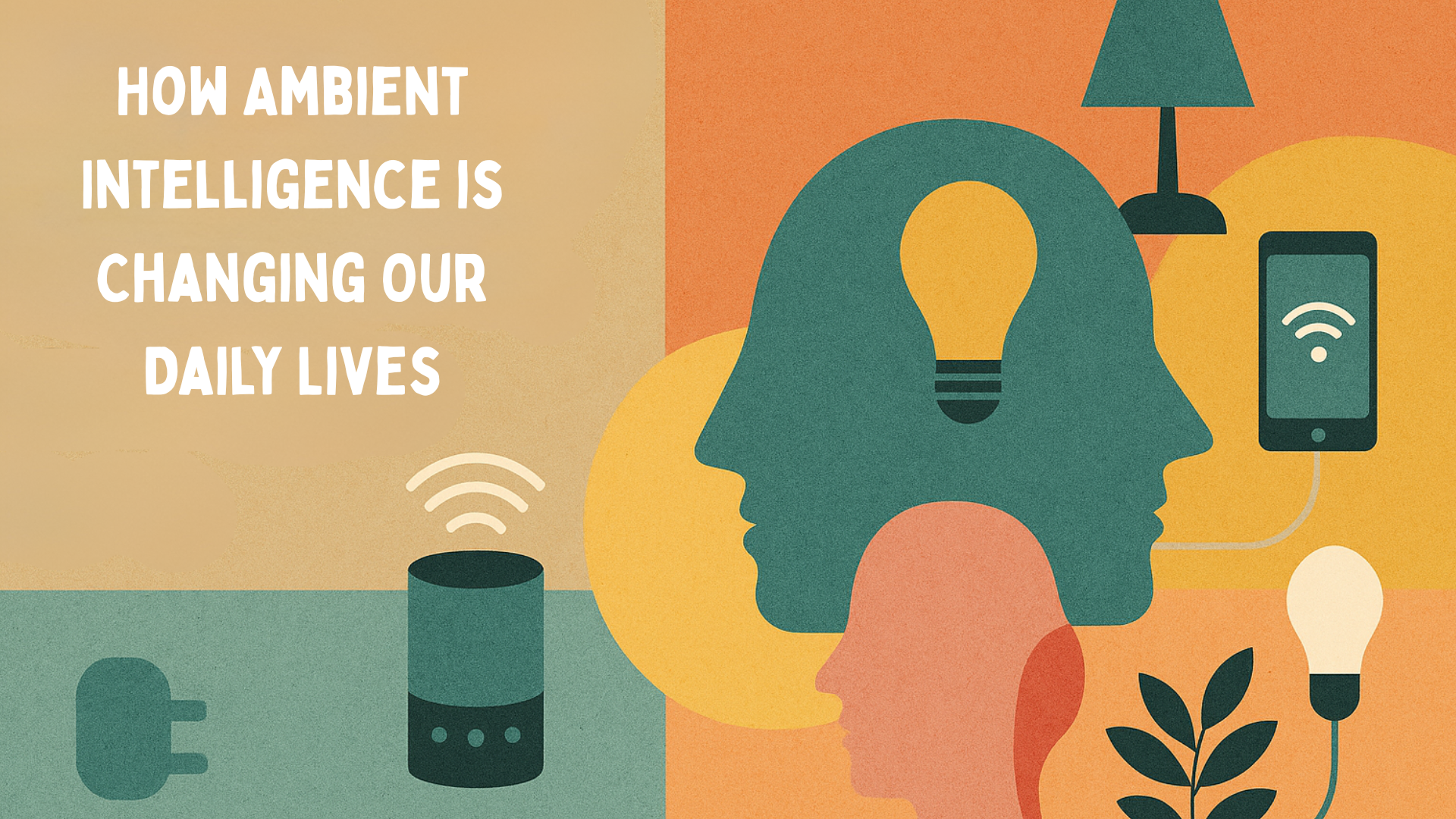 Loading Please Wait...
Loading Please Wait...
 Loading Please Wait...
Loading Please Wait...

Technology used to announce itself loudly. The early days of computing were defined by bulky machines, beeping modems, and glowing screens that demanded our full attention. Today, however, some of the most advanced technologies are practically invisible. They blend into the background of our homes, workplaces, and cities, shaping experiences without requiring direct interaction. This quiet revolution is called ambient intelligence (AmI), and it is steadily reshaping how we live, work, and connect.
Ambient intelligence refers to digital environments that are sensitive, adaptive, and responsive to the presence of people. Unlike traditional devices that you operate consciously—like a smartphone or laptop—AmI is designed to anticipate needs, make decisions, and act with minimal user intervention. In other words, technology becomes less of a tool we use and more of a companion that works alongside us, almost seamlessly.
In this blog, we’ll explore how ambient intelligence works, where we encounter it in everyday life, its benefits and challenges, and the future it promises.
The concept of ambient intelligence first emerged in the late 1990s as researchers envisioned environments enhanced with sensors, data processing, and networked systems. The idea was to create spaces that don’t just respond to explicit commands but understand context—who is present, what they’re doing, and what they might need.
For example, imagine entering a room that automatically adjusts lighting based on your mood, temperature preferences, and time of day, without you touching a switch. Or a workplace where systems prioritize tasks, manage schedules, and adjust environmental conditions to maximize productivity.
At its core, ambient intelligence relies on four key elements:
This combination creates environments that are “aware” and proactive, allowing technology to fade into the background while quietly enhancing human life.
Many people assume ambient intelligence is futuristic, but in reality, it’s already all around us. Here are some domains where AmI is shaping daily routines:
Smart speakers like Amazon Echo or Google Nest are entry points into ambient intelligence. These devices not only answer questions but also control lighting, appliances, and security systems. Thermostats such as Nest “learn” household routines to optimize energy use. Even smart refrigerators track expiry dates and suggest recipes.
The magic lies in the system’s ability to anticipate needs. For instance, lights can turn on as you approach home, doors unlock automatically when they recognize your smartphone, and your coffee machine can start brewing when your morning alarm goes off.
Ambient intelligence is revolutionizing health and wellness. Wearables like Fitbit or Apple Watch monitor vital signs in real time. In hospitals, AmI systems track patients’ movements to prevent falls, adjust room conditions for comfort, and even alert staff when critical changes occur. For the elderly or chronically ill, ambient systems provide a safety net by detecting unusual activity or inactivity and notifying caregivers.
Modern offices use AmI to boost productivity and employee well-being. Smart lighting systems reduce eye strain, while intelligent HVAC systems balance air quality and temperature. Meeting rooms can prepare themselves—turning on projectors, adjusting blinds, and launching video calls—without human intervention. Even task management tools increasingly use ambient intelligence to prioritize work based on deadlines and personal work habits.
Retailers deploy ambient intelligence to personalize shopping experiences. Smart shelves can track inventory and suggest promotions, while sensors detect foot traffic patterns to optimize store layouts. Online, algorithms analyze browsing behavior to recommend products tailored to preferences.
From adaptive traffic signals to autonomous vehicles, transportation systems are brimming with AmI. Smart traffic management reduces congestion, while cars now come equipped with AI that predicts driver fatigue, adjusts navigation, and communicates with infrastructure for safer travel.
“Smart cities” use ambient intelligence to manage waste, control lighting, enhance public safety, and monitor air quality. Streetlights dim or brighten depending on foot traffic, while emergency services rely on real-time environmental sensing to respond more effectively.
Why is ambient intelligence such a transformative force? The answer lies in the unique benefits it offers:
For all its promise, ambient intelligence also raises complex questions. As technology becomes invisible, it risks becoming less accountable. Some challenges include:
AmI systems rely on constant monitoring, which often involves sensitive personal data. Who owns this data, and how securely is it stored? Unauthorized access or misuse could compromise individuals’ privacy.
Connected environments are vulnerable to cyberattacks. A hacked smart home could compromise not just personal comfort but safety. Similarly, in healthcare, compromised data could have life-threatening consequences.
When systems predict and decide for us, there’s a risk of over-reliance. If ambient systems always choose what’s “best,” do humans lose agency in making their own decisions?
AI-driven systems may unintentionally reinforce bias if trained on unrepresentative data. Moreover, the cost of advanced AmI may widen the digital divide, leaving marginalized groups excluded.
Public spaces equipped with sensors and cameras might blur the line between safety and constant surveillance. The balance between collective security and individual freedom becomes delicate.
Ambient intelligence is still evolving, but its trajectory suggests it will become even more pervasive. Here are some trends shaping its future:
The story of technology has always been about making life easier, but ambient intelligence represents a leap from tools we operate to environments that operate on our behalf. Already woven into homes, workplaces, healthcare, and cities, this “invisible tech” promises a world that is more responsive, efficient, and human-centered.
At the same time, we must remain cautious. Questions about privacy, autonomy, and fairness cannot be ignored. For ambient intelligence to reach its full potential, its deployment must be guided by transparency, ethics, and inclusivity.
Ultimately, ambient intelligence is less about flashy gadgets and more about quiet transformation. It’s about creating a world where technology steps back, people step forward, and life flows more naturally—often without us even realizing that technology is at work.